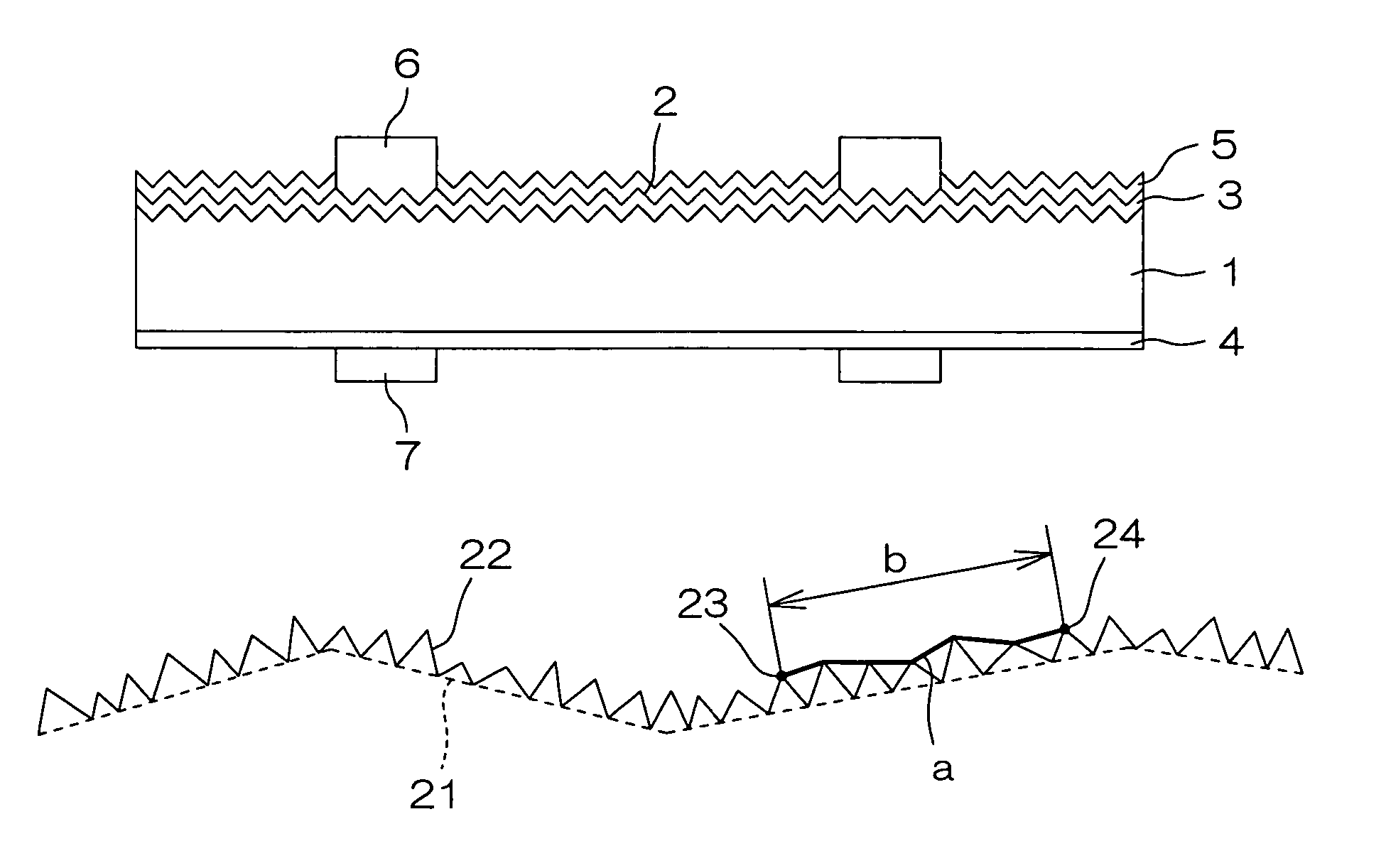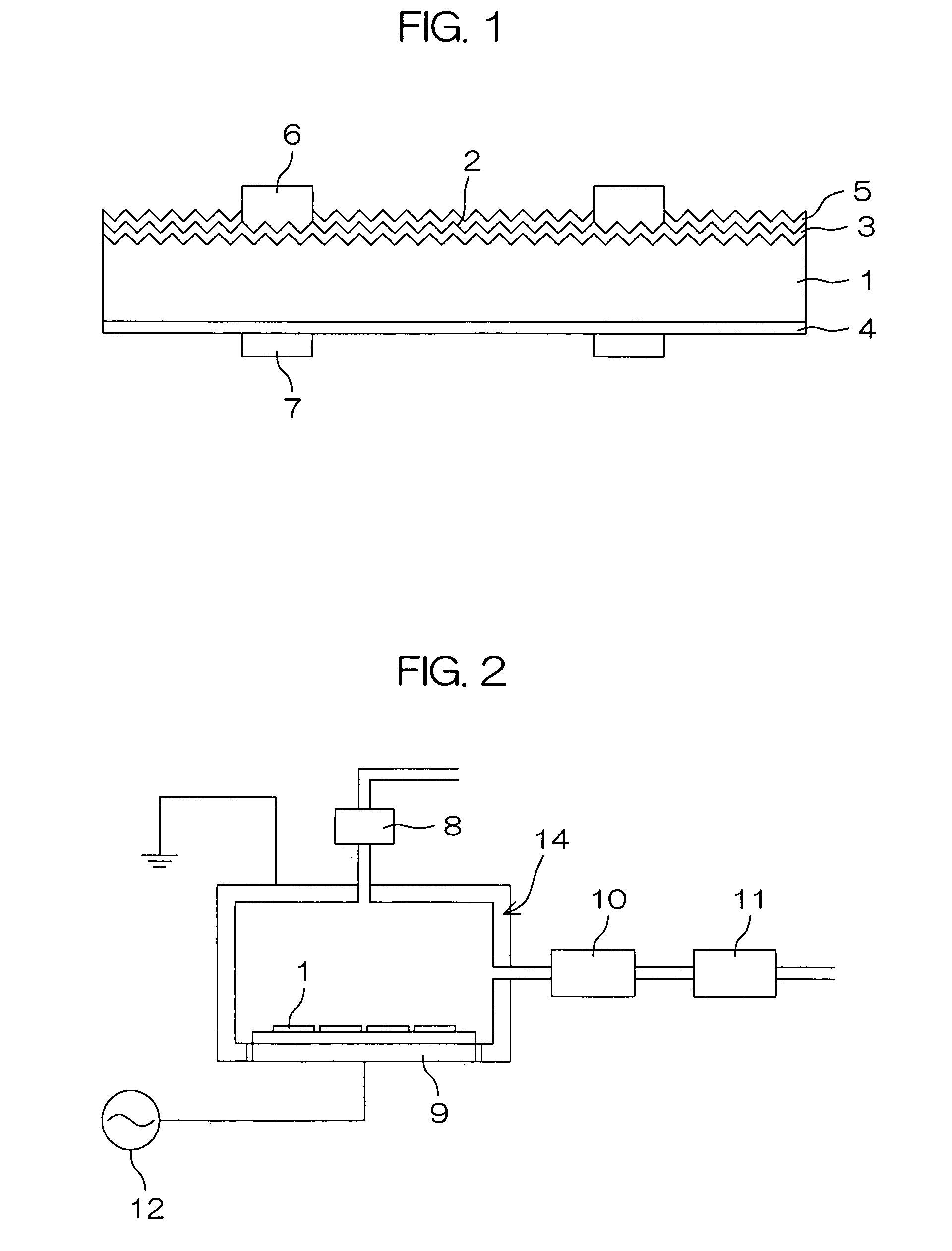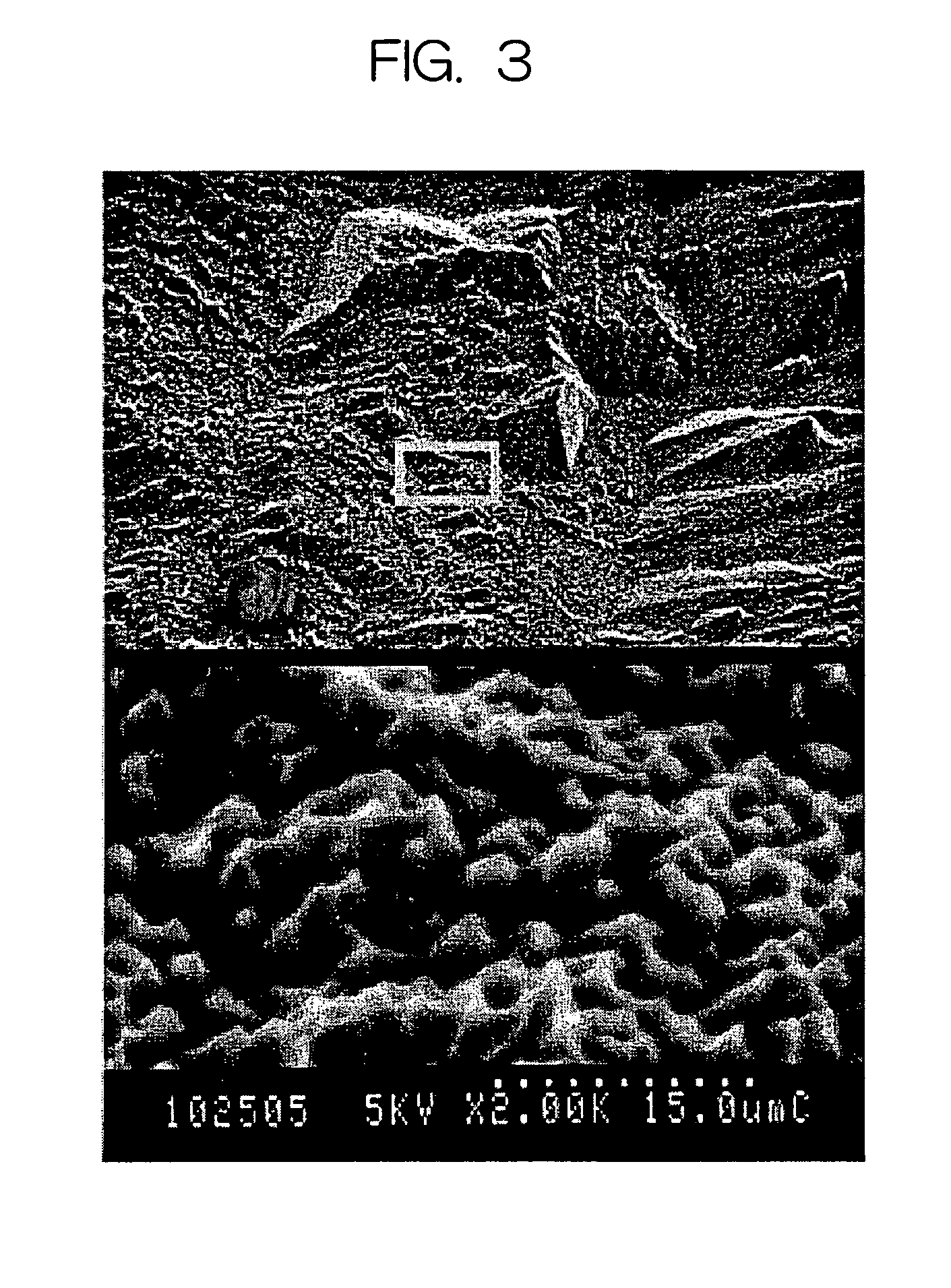Multicrystalline silicon substrate and process for roughening surface thereof
- Summary
- Abstract
- Description
- Claims
- Application Information
AI Technical Summary
Benefits of technology
Problems solved by technology
Method used
Image
Examples
Embodiment Construction
[0031]A specific embodiment of the present invention will be hereinafter described in detail with reference to the accompanying drawings taking a bulk crystalline silicon solar cell as an example. However, the present invention is not limited to this example and applicable to solar cells of other types including thin film solar cells using a glass substrate.
[0032]FIG. 1 is a cross section showing a structure of a solar cell fabricated by a substrate processing method of the invention. Referring to FIG. 1, numeral 1 denotes a silicon substrate, numeral 2 denotes textures formed on the silicon substrate 1, numeral 3 denotes an impurity diffusing layer on the light-reception surface side, numeral 4 denotes an impurity diffusing layer (BSF) on the back surface side of the silicon, numeral 6 denotes a surface electrode, and numeral 7 denotes a back surface electrode.
[0033]On the surface side of the silicon substrate 1, impurity diffusing layer 3 in which another type impurity against the...
PUM
| Property | Measurement | Unit |
|---|---|---|
| Width | aaaaa | aaaaa |
| Height | aaaaa | aaaaa |
| Ratio | aaaaa | aaaaa |
Abstract
Description
Claims
Application Information
 Login to View More
Login to View More - R&D
- Intellectual Property
- Life Sciences
- Materials
- Tech Scout
- Unparalleled Data Quality
- Higher Quality Content
- 60% Fewer Hallucinations
Browse by: Latest US Patents, China's latest patents, Technical Efficacy Thesaurus, Application Domain, Technology Topic, Popular Technical Reports.
© 2025 PatSnap. All rights reserved.Legal|Privacy policy|Modern Slavery Act Transparency Statement|Sitemap|About US| Contact US: help@patsnap.com



